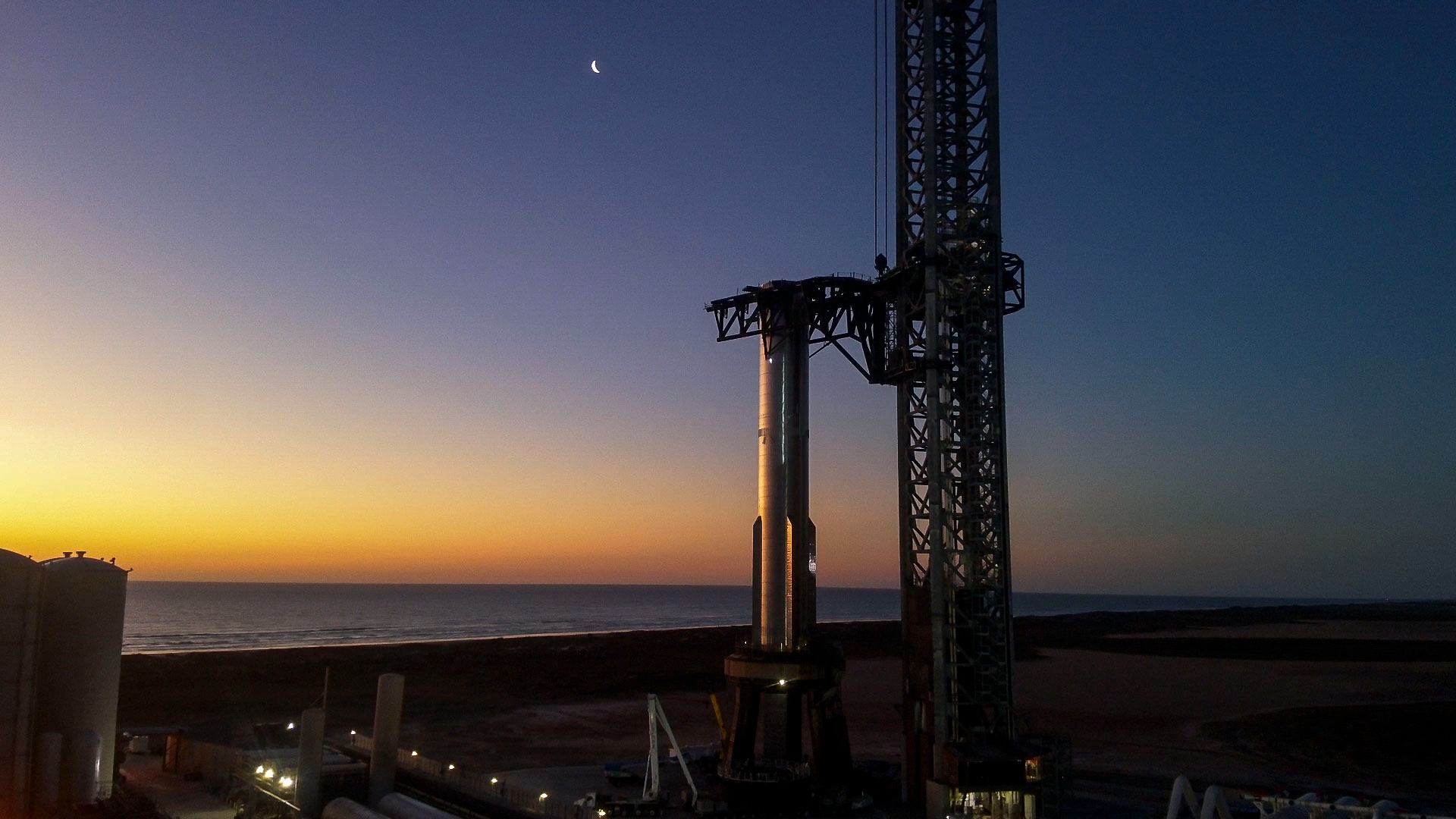SpaceX moves Super Heavy booster to pad ahead of 4th Starship flight (photos)

SpaceX is continuing to gear up for the next test flight of its Starship megarocket.
On Thursday (April 4), SpaceX announced via X that it has moved a Starship first stage, a 33-engine booster called Super Heavy, to the launch pad at its Starbase site in South Texas.
That post also shared two photos of the giant, stainless-steel booster clutched by the "chopstick" arms of the tower at Starbase's orbital launch mount.
Related: Relive SpaceX Starship's 3rd flight test in breathtaking photos
Super Heavy is presumably being positioned for a static fire, a prelaunch test in which the booster's 33 Raptor engines will burn for a few seconds while the vehicle remains anchored to the pad.
SpaceX has already performed static fires with the booster's partner — a 165-foot-tall (50-meter-tall) upper-stage spacecraft that will fly with this Super Heavy on the fourth Starship test flight.
That mission could launch as soon as as soon as early May, SpaceX President and Chief Operating Officer Gwynne Shotwell said last month.
Breaking space news, the latest updates on rocket launches, skywatching events and more!
Starship Die Cast Rocket Model Now $69.99 on Amazon.
If you can't see SpaceX's Starship in person, you can score a model of your own. Standing at 13.77 inches (35 cm), this is a 1:375 ratio of SpaceX's Starship as a desktop model. The materials here are alloy steel and it weighs just 225g.
Note: Stock is low so you'll have to act quickly to get this.
SpaceX is developing Starship — a fully reusable vehicle that's the biggest and most powerful rocket ever built — to get people and cargo to the moon, Mars and beyond.
Starship has launched three times to date: in April 2023, November 2023 and March 14 of this year. The megarocket has performed better on each successive flight, though none were fully successful.
Starship's two stages failed to separate as planned on its debut mission, and SpaceX detonated the vehicle intentionally after just four minutes. The November flight saw a good stage separation, but that mission ended eight minutes after liftoff.
The March 14 flight, however, lasted nearly 50 minutes. Starship's upper stage notched a number of milestones during that time, including opening its payload doors in space, before finally breaking apart while reentering Earth's atmosphere.

Michael Wall is a Senior Space Writer with Space.com and joined the team in 2010. He primarily covers exoplanets, spaceflight and military space, but has been known to dabble in the space art beat. His book about the search for alien life, "Out There," was published on Nov. 13, 2018. Before becoming a science writer, Michael worked as a herpetologist and wildlife biologist. He has a Ph.D. in evolutionary biology from the University of Sydney, Australia, a bachelor's degree from the University of Arizona, and a graduate certificate in science writing from the University of California, Santa Cruz. To find out what his latest project is, you can follow Michael on Twitter.


